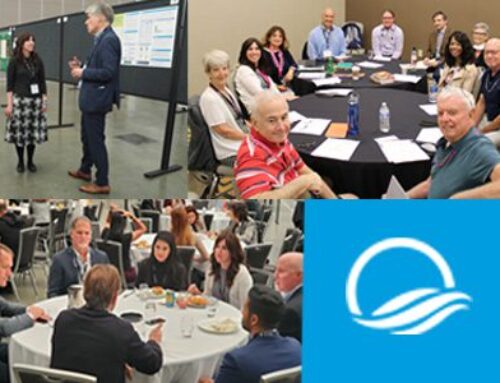Today’s researchers estimate that there are over 200 classified cancers today and that one out of three people will be affected by it at some stage in their life. With the extreme prevalence of cancer in today’s world, it may be surprising to some that there is an entire category of cancers that is not only collectively rare but composed almost entirely of some of the rarest forms of cancer identified. As the most prevalent of the 70 currently classified sarcoma subtypes, GIST comprises about one third of sarcoma cases diagnosed in the United States. However, these are still extremely low figures relative to the world of cancer when you consider that sarcomas only represent 1% of all cancer diagnoses.
At the 2015 Annual Meeting of the Connective Tissue Oncology Society (CTOS), sarcoma researchers, clinicians, patient advocacy groups and the pharmaceutical industry gathered in Salt Lake City to continue the work of lifting the veil surrounding sarcomas and sarcoma research. As defined by the conference’s presenters, the largest issues currently facing soft tissue sarcoma research and treatment include:
- Rarity of population – With the exception of major medical centers in which specialized physicians draw patients from around the country, gathering a critical mass of patients for observation and analysis is difficult. Low patient population figures make recruitment for clinical trials difficult, and if a clinical trial cannot successfully recruit it cannot advance, limiting treatment options for the patient population in question.
- Funding for rare orphan diseases – Along with a smaller patient base comes the corresponding challenge of raising funding for continuing research. Private donations are less plentiful because there are simply fewer people to contribute and private industry has less of a financial incentive to invest as the target consumer base is inherently smaller. These funding challenges trickle down to rare disease researchers who struggle to keep their labs open and their work ongoing as well as impacting the number of new researchers choosing to specialize in these fields due to the lack of funding available.
- Many distinct tumor types – As research develops in all cancers, it is found that even though a disease may be termed with a single name (i.e. GIST), that single disease is in fact a label encompassing a host of sub-mutational types each with its own unique characteristics including progression, stability and response to treatment. In GIST alone to date there are 14 classified mutational types, with many more still unknown and grouped together as “wildtype”. With this level of variability existing within even a single disease, tackling the complexity of sarcomas is daunting.
- Initial diagnosis and treatment – Since sarcomas present in such a rare and varied manner, a patient’s first diagnosis and treatment will almost invariably be by a non-specialist. There are few true practicing sarcoma specialist clinicians and those in the United States tend to be clustered along the coasts making regular travel and access difficult for patients. Some GIST patients are referred to gastrointestinal specialists instead of oncologists and not all oncologists are familiar with GIST, let alone the rarer sarcomas.
- Treatment of metastatic disease – For those sarcomas, like GIST, which do not manifest physical symptoms unique to one condition or if there is a delay in visible symptoms until the cancer is at an advanced stage, the incidence of metastatic disease at diagnosis is a clear danger. Greater funding for research, better physician education and awareness, and improved screening techniques can all contribute to the decrease of metastatic disease progression. However, treating metastatic disease may be inevitable in some cases leading to a difficult set of challenges. A tumor’s location, size and mutational type each inform the course of treatment. Weighing multiple sets of factors expands the decision criteria considerably and leaves the treating physician with a series of difficult decisions.
In addition to acknowledging and delving into the challenges facing the sarcoma community, CTOS also provided an opportunity to present the future goals of research in the coming years and the direction and focus needed to improve patient outcomes:
- Better understanding of biology
- Better understanding of pathogenetic mechanisms
- Larger collaborative studies of single histotypes
- Prognostic schemes of individual histotypes
- More targeted therapies
- Affordable, effective care
Although there is clearly much work still to be done, the field of GIST research and its patients have benefitted from many significant breakthroughs in the origins and understanding of GIST mutations and the treatment options these have yielded including three FDA-approved oral chemotherapies. The road for many other sarcomas has been longer and much more difficult with some still searching for answers as to the cause of their cancer. CTOS 2015 provided an opportunity for the rarest of the cancer world to unite over not only their collective challenges but also the areas in which they might collaborate to improve the lives of those with sarcoma as a whole.


